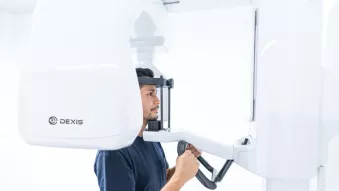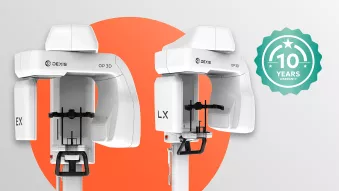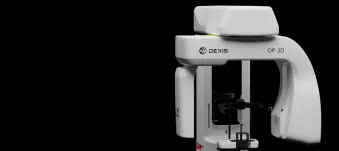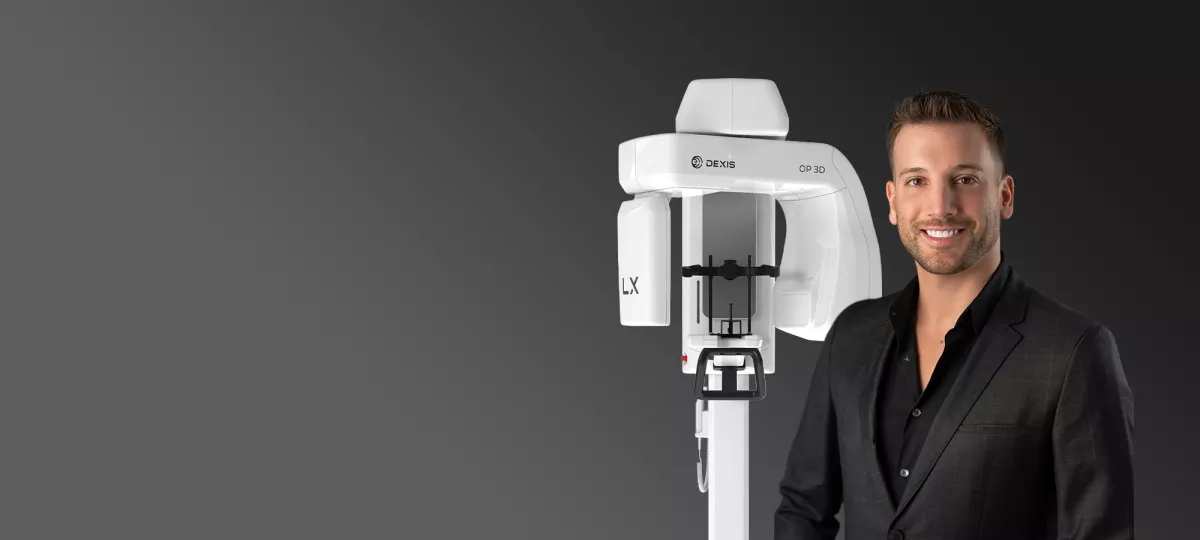
“It’s Like Night
and Day”
Discovering the Difference
in Image Quality with Automatic Dose Control
A leading CBCT solution, the DEXIS ORTHOPANTOMOGRAPH™ OP 3D™ LX has just introduced a brand-new feature that—in the words of Dr. Andrew Stiles, owner of Coral Surgery in Coral Springs, FL (USA)—“is like we’ve suddenly put on glasses when we’re looking at scans.”
Automatic Dose Control (ADC) automatically measures patients’ anatomy, then sets exposure levels for the optimal balance of image quality and dose, based on the image you would like to capture.
DEXIS has received positive responses from early adopters, who praise Automatic Dose Control for the improvement they’ve seen in image quality and clarity. Dr. Andrew Stiles, however, wasn’t entirely convinced that his practice needed the new feature activated on his practice’s OP 3D LX. That changed once he tried it.
From Scout Hesitant to Scout Enthusiast
Dr. Stiles is an oral and maxillofacial surgeon and treats a variety of needs, from simple molar extractions to complex surgeries and everything in between.
“We take anywhere between three and eight 3D scans a day using our OP 3D LX,”
Dr. Stiles estimates. “We rarely take panoramic X-rays, and mostly use our OP 3D LX for large field of view images.”
Not a regular user of scout, Dr. Stiles decided to let scout with Automatic Dose Control be his default setting for just one day.
“My team was reluctant to use scout, thinking it would slow them down,”
Dr. Stiles admits. “But when we saw the results from scout with Automatic Dose Control enabled, it became very clear that we’ll be using this feature from now on.”
A Significant Difference in Image Clarity
“You can see the cases where we took the 3D scan before Automatic Dose Control, how the images are a bit blurry and inconsistent,”
he explains. “As soon as we started doing scouts, every single 3D image came out crystal clear.”
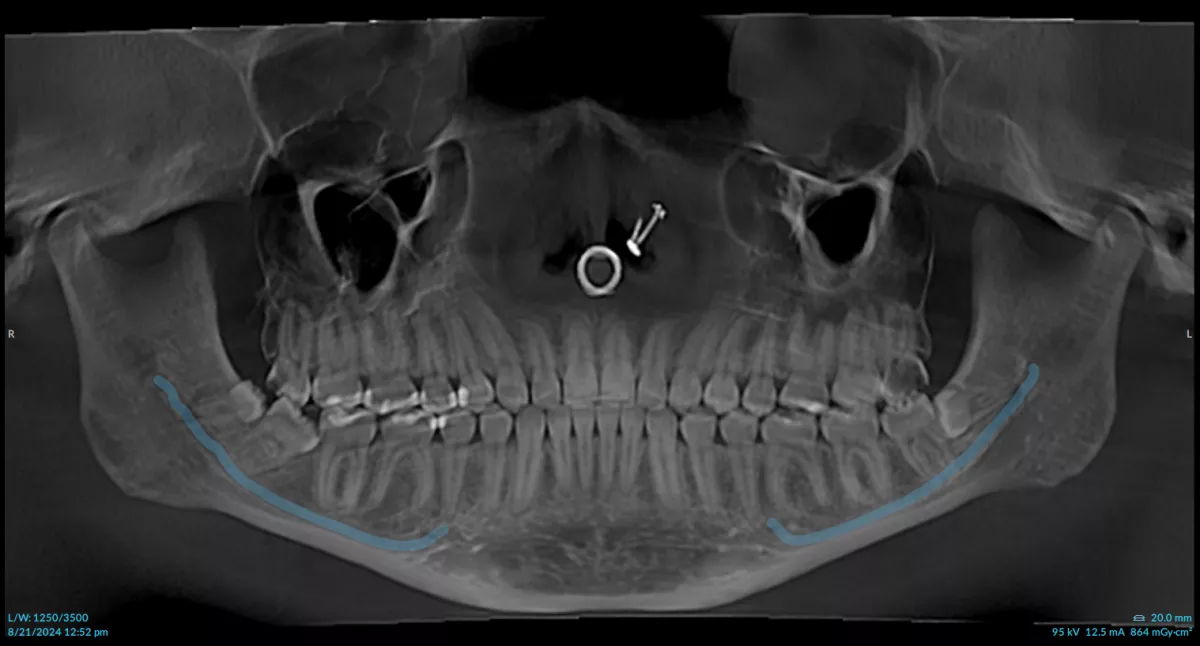
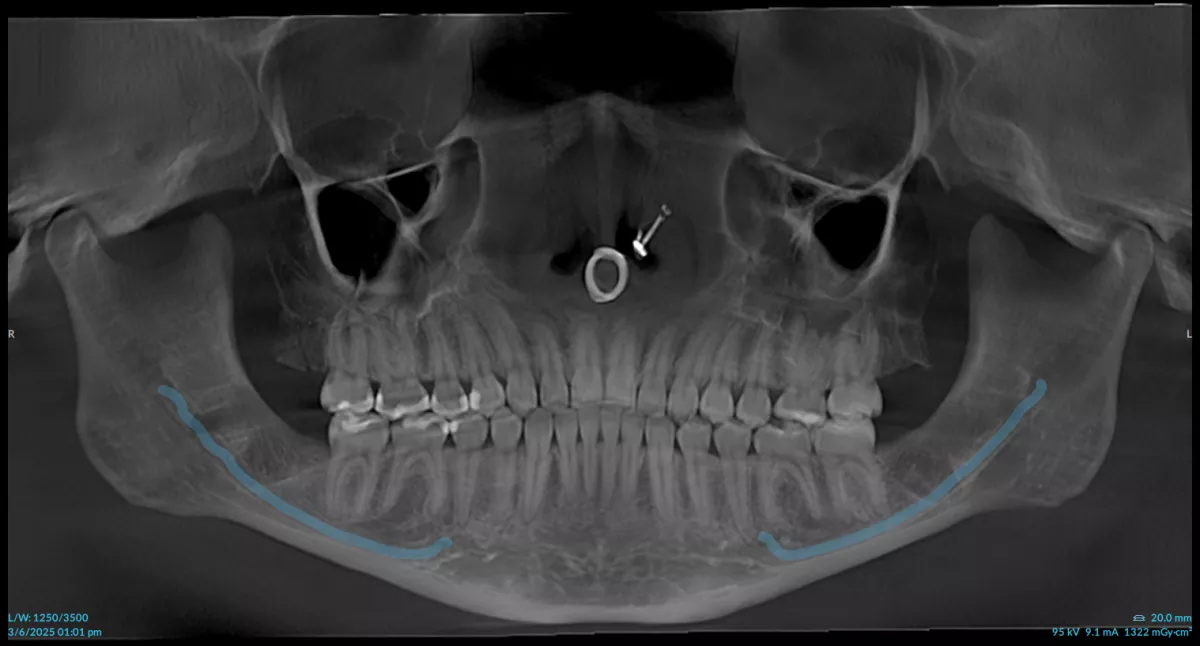
For his younger patients with thinner cortical bone and less development, Dr. Stiles appreciates the ability to use Automatic Dose Control to manage the radiation exposure accordingly. “Automatic Dose Control adjusts the radiation dose for an 8-year-old and produces a phenomenal image in the first scout shot. Compare that to an older patient with a thick cortical plate who needs a slightly higher dose to get the same level of image quality. With Automatic Dose Control, that adjustment happens automatically to ensure a clear image.”
For cases where a supernumerated tooth requires extraction, he uses scout to create a de facto surgical template to ensure he’s extracting just the right tooth in the right spot.
“The excellent image quality means I don’t have to scope as much,”
says Dr. Stiles. “I can decrease incision length and do less drilling, which means less pain for the patient and faster healing.”
For another patient, Automatic Dose Control revealed bilateral calcifications of the carotid artery, indicating the possible need for a bilateral carotid endarterectomy. “The calcification is pronounced in the image,” he explains. “You can clearly see it in both the medial and lateral walls, so I was able to tell this patient to speak to their doctor about the issue, given that there’s a higher risk for stroke or another emergency.”
The images with Automatic Dose Control additionally revealed a large tonsil stone in another patient. “You can see how rounded the tonsillolith is, the presence of calcification in the tonsils,”
says Dr. Stiles. “I was able to reassure the patient not to worry, that there’s nothing urgent other than the possibility of bad breadth, but that she could see an ENT to have the stones taken care of.”
While Dr. Stiles’ team initially expressed some hesitation about the extra step needed to take a scout, they’ve since realized and embraced the advantages. “It only takes them an extra minute, but the improvement in image quality is completely worth it,”
he says. “Now the scout is just another part of their routine.”
For Dr. Stiles and his team, the difference before and after Automatic Dose Control is “like night and day.” He adds, “It’s like we’ve suddenly put on glasses when we’re looking at scans now. There’s more predictable clarity which leads to more confident diagnosis and treatment planning. There’s also a higher level of comfort among patients and staff around the use of radiation. It’s a great addition to OP 3D LX and to our practice.”
